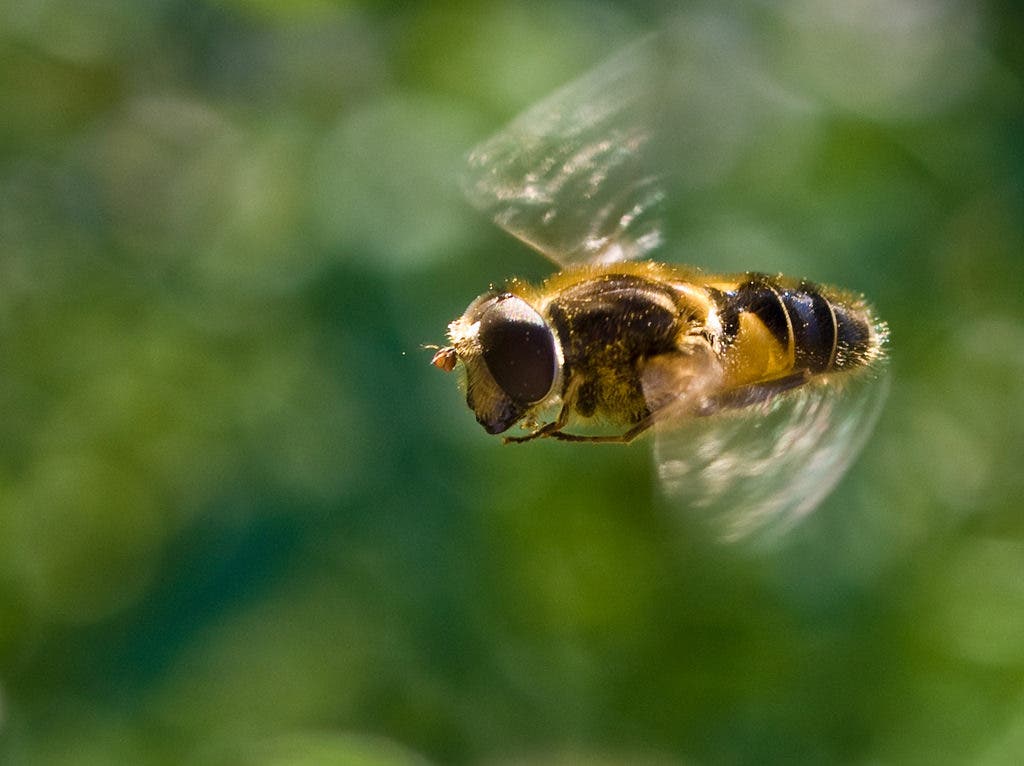A new paper found that bees show behavior associated with optimism, suggesting that the insects have a lot more going on inside than we’ve suspected.

I really like bees. They’re cute, they’re fuzzy, and they make food grow — churning out sweets in the process. But we tend to think the little things live unknowing slaves, toiling away from the queen then dying exhausted and unfulfilled, their devotion sometimes taking them to hellish landscapes. A new paper from the Queen Mary University of London however comes to show that the busy bees are actually a-buzz with excitement. While they probably can’t feel emotions the same way we do, the team found that the insects can experience something we’d describe as a rush of optimism.
“We can’t say they experience life in the same way that we do,” cognitive neuroethologist Clint J. Perry told Popular Science. “But on a basic level, there’s no reason to believe they can’t feel something. It does feel like something to be a bee or an ant or what-have-you.”
Working with researchers Luigi Baciadonna and Lars Chittka, Perry wanted to check if bees can feel positive emotions. Since they can’t smile or tell us about the warm fuzzy feelings they may or may not be experiencing, the team created a test environment to check their theory.
The bees were placed in a chamber with two small doors — one green, one blue, because they can easily distinguish shades of these colors. They placed plain water behind the green door and sugar water behind the blue one, and recorded how long it took the bees to enter a door. For the final stage of the test, they gave half the bees an extra shot of sugar water then presented the whole group with a mystery blue-green door. The insects in the extra-sugar group dashed for the door — the others, not so much.
The team said the bees were quicker to fly to this door and find if there was more sugar hidden behind it, indicative of optimism. They weren’t flying faster in a sugar rush — the team measured and there no speed difference between the groups. They were, however, much quicker to make a decision and act on it. When the trio found they could buzz-kill the bees’ optimism with dopamine-killer fluphenazine, returning them to their original state, they had proof of “emotion-like states” changing the insects’ behavior. Just like we feel better, more confident and more optimistic after downing a few cold pints, the sugar was making these bees fell better about life.
The team then simulated a spider attack on the insects, because why just let them be happy? They found that the bees who received extra sugar flew to the feeder four times faster, suggesting they were able to more easily recover from the scare.
Still, while the findings do show that there’s more happening in a bee’s brain than we thought, they still probably experience any emotion-like state very differently from us. They do seem to tick the marks we use to study emotional expression in infants and nonverbal mammals, however.
“That feeling inside is what’s so close to us and makes emotion present in our lives? Emotions are a lot more than that,” Perry says.
“We’re understanding that insects aren’t these behaviorally rigid machines,” he added. “They’re much more complex than we have often thought.”
I wonder how they feel about the fact that we’re killing them dead. Sigh.
The full paper “Unexpected rewards induce dopamine-dependent positive emotion–like state changes in bumblebees” has been published in the journal Science.
Was this helpful?



